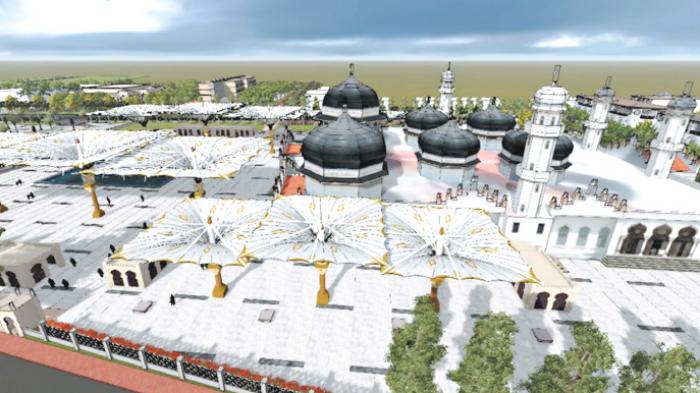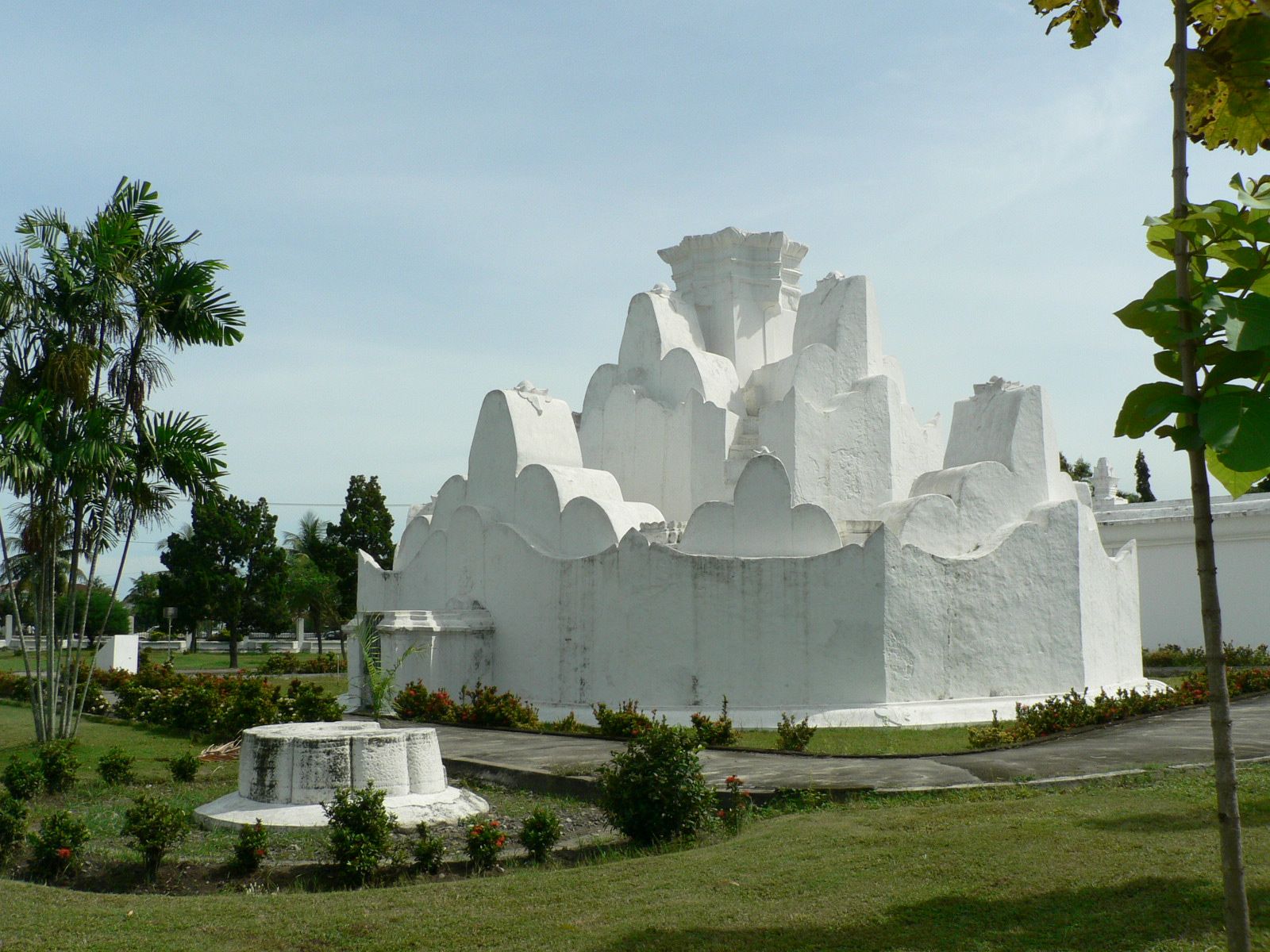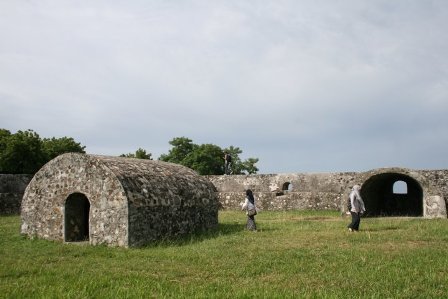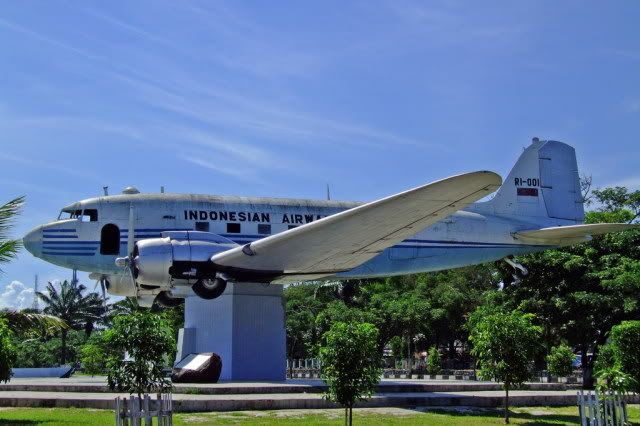7 HISTORICAL PLACES IN ACEH.
Hi Friends Steemians all ,,,
I will try to review the World Heritage Sites of Aceh known by the World, because I never lived in those days, meaning my review must be copas from reliable sources and based on the study.
The centuries of Aceh's silane have traces of civilizations recognized by the world. Traces of centuries-old Aceh civilization leave so many historic places still intact today. The people of Aceh can know the traces of their nation's civilization through historical sites of the past centuries that still exist today, recorded in the history of Acehnese people are identical with the war, even I have heard the people of Aceh say "Aceh Muprang, Padang peugah haba, Java duk keu Peumimpin ", apart from these words Acehnese people are already full of life in the war. In every civilization Aceh people always face many problems, ranging from colonized to war between GAM and RI, which attract and become a pride for us Aceh people are in every colony and war, Aceh people never give up. The battle between GAM and the Republic of Indonesia is concrete evidence and has not been lost in our memories.
Evidence of a nation once had civilization is with the existence of historical places, among the many historical relics, there are seven historical relics already in the know of the world:
Baiturrahman Great Mosque
The mosque that stands in the center of the capital city of Aceh Province is MESJID RAYA BAITURRAHMAN, is the mosque of Pride of Aceh Community. The mosque was built during the Sultanate of Aceh built by Sultan Iskandar Muda Mahkota Alam in 1022 H / 1612 AD Beautiful and magnificent buildings similar to the Taj Mahal in India, although now much has been done pembenahan, but the basic characteristics of Baiturrahman Great Mosque remains still awake.
Kherkoff Peucut
Kherkoff Peucut is the name of the Church or the grave. The Dutch soldier tomb is located right behind the Tsunami Museum, Entering the complex area, visitors are greeted with a writing written in Dutch, Javanese and Malay Arabic. It reads "For our fallen companions on the battlefield". Thousands of Dutch soldiers of various ranks were buried there.
Here are some sources that review about Kherkoff Peucut historic Sites
Gunongan
Gunongan is one of the places in the form of a mountain and white color, built by Sultan Iskandar Muda as a sign of his love for Putroe Phang or Princess Kamaliah. Gunongan is a resembling mountain or mimic topography of a three-story mountain with a peak like a tower. Gunongan bermaterial limestone, sand, and lime adhesive.
Gunongan stands 9.5 meters tall, depicting a blooming white flower that symbolizes the sincerity of love. The walls are carved with saliva flowers with strands of love that are tied in the soul and built in three levels. Gunongan also be a silent witness of the might and glory of the Kingdom of Aceh under the pimpipinan Sultan Iskandar Muda.
Donya's Chakra Bell
Donya's Chakra bell was given by Admiral Cheng Ho on the fourth coming to Samudera Pasai in 1414 AD, the bell was given as a gift of Emperor Yongle, the Chinese ruler, to Sultan Samudra Pasai. The bell was made in 1409 AD. The height reached 125 centimeters, 75 centimeters wide. On the outside is engraved the decoration and the Arabic script is also Chinese.
The bells are proof of the power of Pasai Ocean Kingdom, after Pasai Ocean was conquered by the Kingdom of Aceh Darussalam under the leadership of Sultan Ali Mughayatsyah in 1542 AD, the bell was confiscated and brought to Koetaradja (now Banda Aceh), the center of the Aceh Darussalam Kingdom. During the reign of Sultan Iskandar Muda (1607-1636), this bell was installed in the stern of a warship named Cakra donya.
Rumoh Aceh
Rumoh Aceh is a stilt house with a pole height between 2.50-3meter, consisting of three or five spaces, with one main room called vines. Rumoh with three spaces has 16 columns, while Rumoh with five spaces has 24 columns.
The house that became the symbol and characteristic of Aceh now almost no longer exists. In the bottom of the house which is often called yubmoh can be used to store various objects, such as Jeungki (rice pestle), it has a place (where to store rice) and also functioned as a playground children and also often used swing place baby children.
Benteng Indra Patra
Indra Patra fortress is a relic of the Hindu Kingdom in Aceh. Before Islam entered Aceh The majority of Acehnese people were Panganut Hindu Religion, a strong proof of that history was the Indra Patra Fortress that became the main Hindu Hindu stronghold at the time.
According to the history of Islam's easy conquest of Aceh is also inseparable from the basic religion that is embraced, because between Islam and Hinduism almost the same implementation, just different akidahnya, Hindus also have the Peusijuk tradition in Islam also there Peusijuk tradition only different purposes and ways.
Indra Patra's fortress consists of a 4900-square-meter main castle and three other fortresses, two of which have been destroyed. This archaeological site was founded around 604 AD by the ruling King Harsya's son in India, who escaped from the pursuit of the Hunan Nation. The existence of this fort became a historical relic of the process of entry of Hindu influences from India to Aceh. It was estimated that at that time, the Hindu Kingdom, Lamuri, began to develop in the North Coast of Aceh Besar. This fort is one of the three forts that mark the triangle region of the Hindu kingdom of Aceh, namely Indra Patra, Indra Puri and Indra Purwa.
Aircraft seulawah Agam
The Seulawah Agam aircraft is the first Air Force of the Republic of Indonesia. The plane was a prize collected from the Acehnese People from Entrepreneurs.
On June 16, 1948, President Soekarno came to Aceh and attended a joint meal organized by the Indonesian Saudagar Association of Aceh (Gasida), at Atjeh Hotel, Banda Aceh, before the dinner started, Sukarno stood and asked for permission time to talk, "I will not eat tonight, if the funds to buy planes have not been collected".
Prior to the meeting Soekarno had already met with these entrepreneurs, Sukarno appealed voluntary assistance to them to purchase an Aircraft as a means of traveling the Presidency. The logical reason that Soekarno conveyed at the time was the vastness of Indonesia, which would not be observed by land travel.
After conducting a joint Deliberation, the Acehnese entrepreneurs who joined in GASIDA agreed with the request of President Soekarno, even the entrepreneurs directly collect the money at that time. In the morning of 17 June 1948 President Soekarno gave a speech in the Blang Padang banda Aceh field, and informed him that his arrival to Aceh was specifically to request assistance for the purchase of aircraft from GASIDA.
After the donations were collected, in the form of money, gold bars and jewelery, and other goods belonging to the Aceh People, President Soekarno returned to Jakarta.
On the 1st of August 1948 Gasida Chairman Muhammad Juned Yusuf and several members of the Dakota Fund Committee on August 1, 1948 left for Singapore with the funds and two kilograms of gold.
The funds are then used to purchase a Dakota plane and become the first transport plane owned by the Indonesian nation. Dakota aircraft donations from the people of Aceh was then given the name Dakota RI-001 Seulawah. Seulawah itself means "Golden Mountain".




Thank's for share
You are welcome